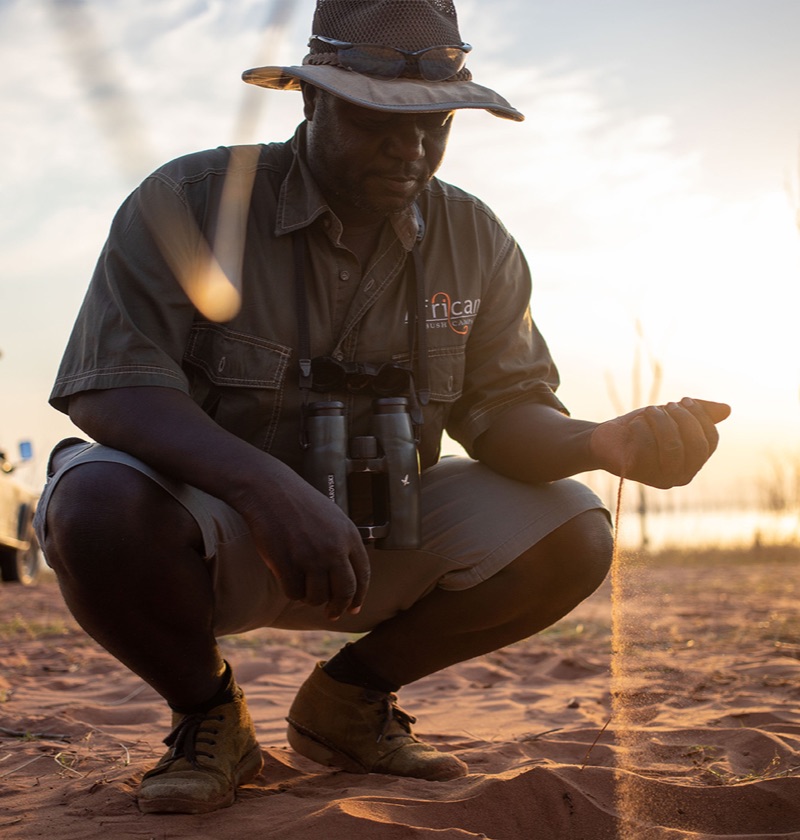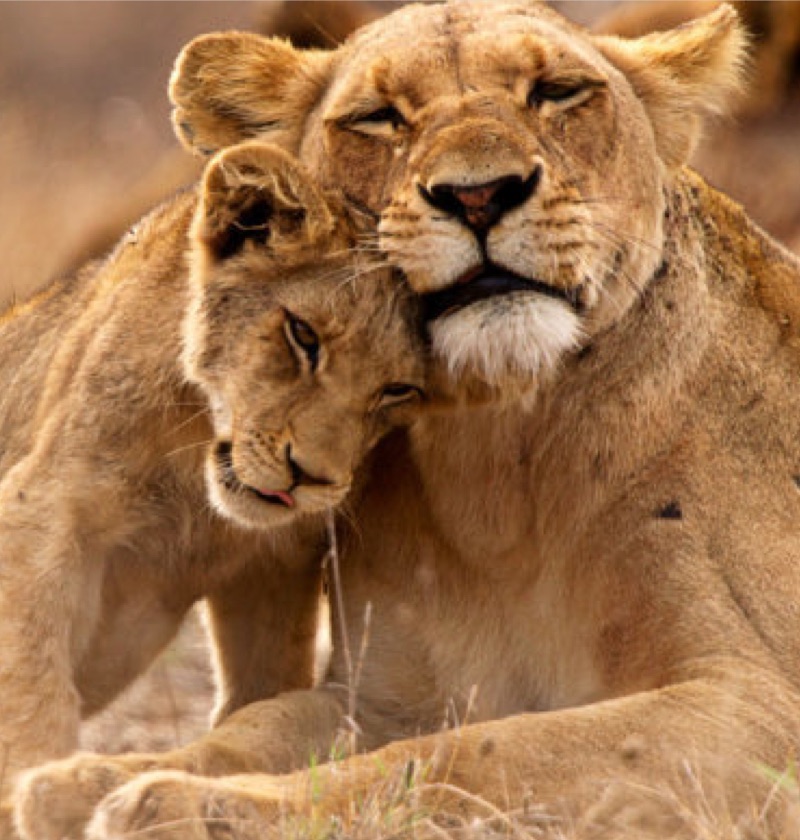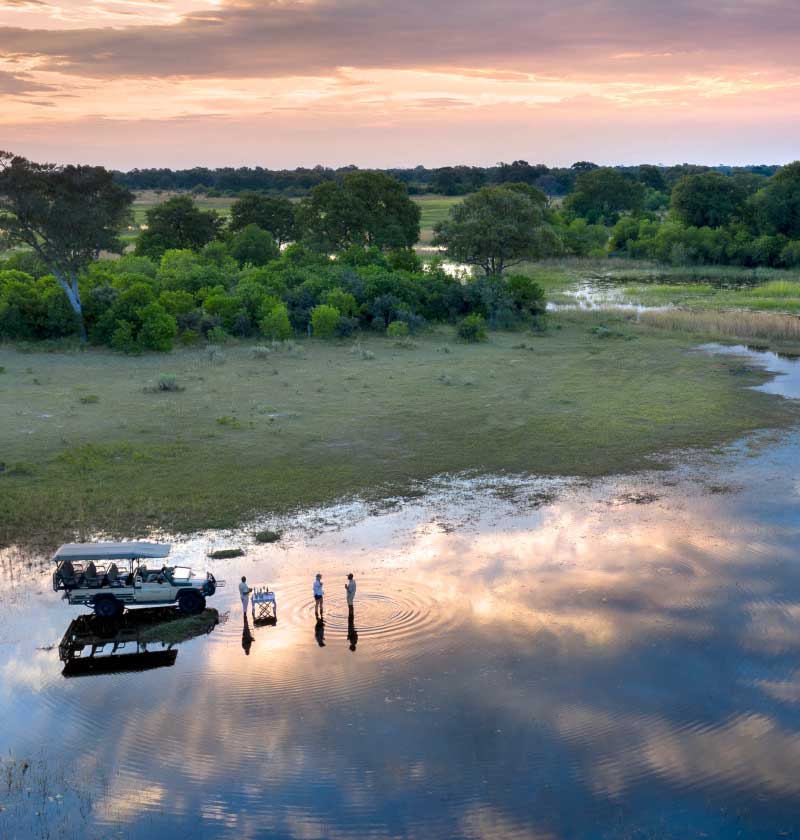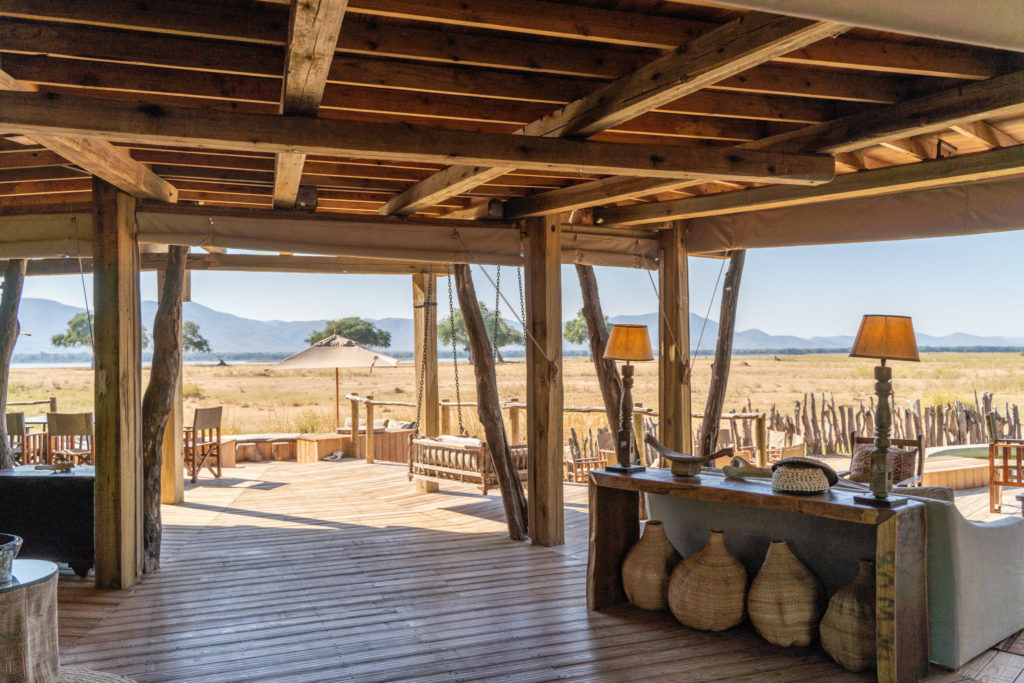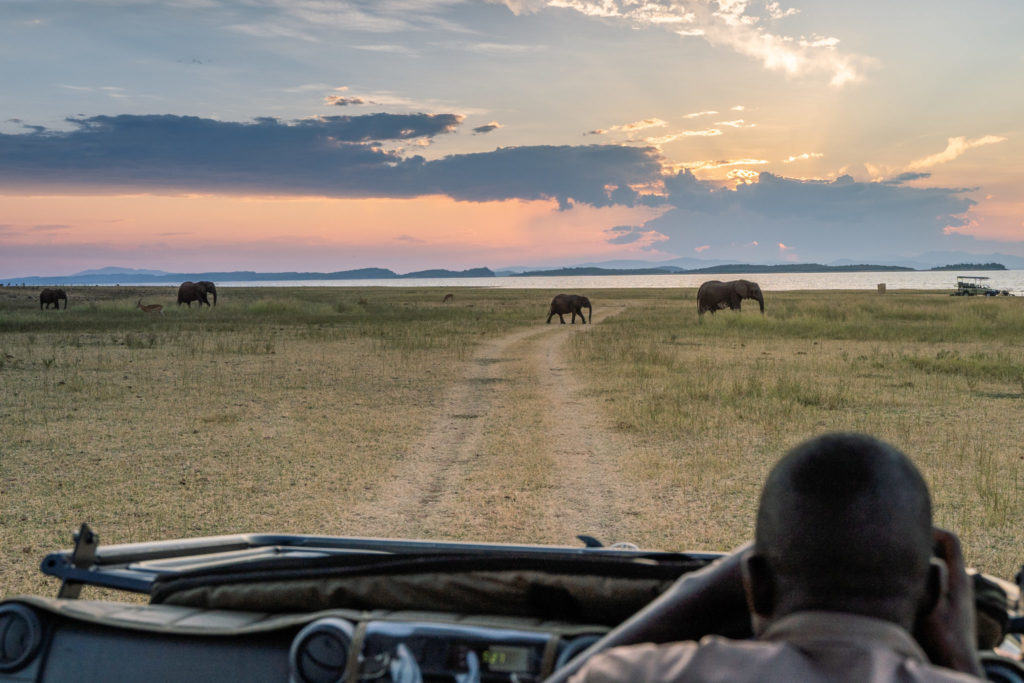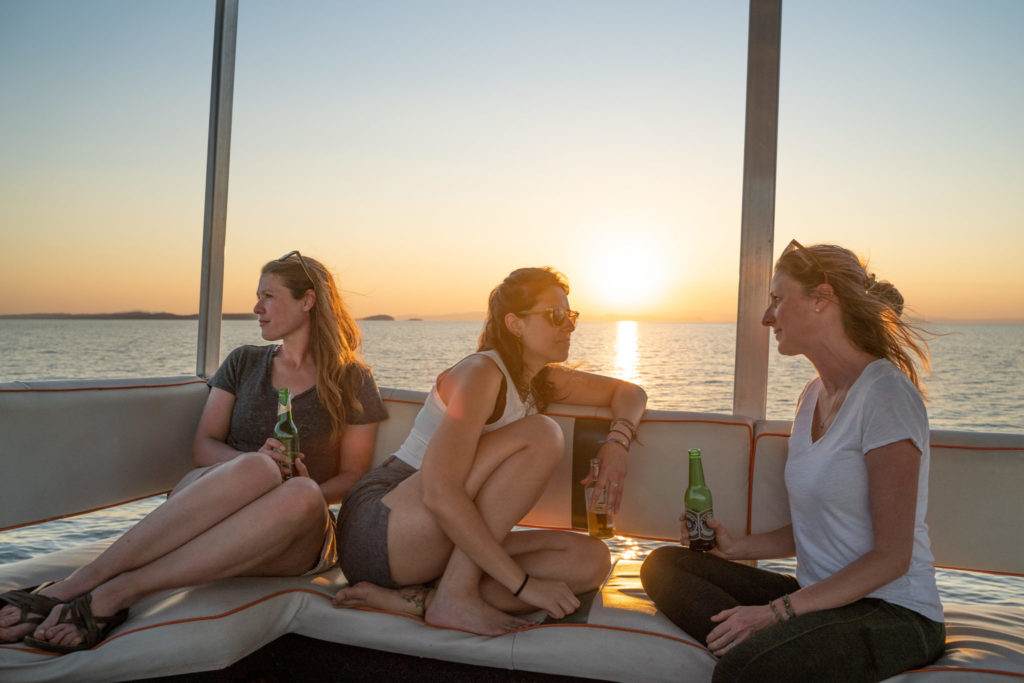BY DANIA WEINSTEIN

The Zambezi, spanning 2,700 km, is the 4th longest river in Africa, after the Nile, Congo, and Niger. It begins from a spring in north-western Zambia, then twists and turns through 6 countries before emptying into the Indian Ocean. From Zambia, it flows through Angola, Namibia, Botswana, Zimbabwe, and Mozambique.
This one mighty river represents so much. It is the river that tumbles over the thunderous Victoria Falls. It marks the boundary between Zambia and three neighboring countries: Namibia, Botswana, and Zimbabwe. Its’ power is harnessed in multiple locations, including Lake Kariba in Zimbabwe and Cahora Bassa Dam in Mozambique, to generate hydroelectricity for most of Zimbabwe, Zambia, and South Africa. It is inhabited by the legendary Nyami Nyami river spirit, half-fish and half-snake, who dictates, through tumultuous moods, whether the year’s crop will be plentiful or doomed. Hippo, crocs, lizards, fish, elephants, and countless birds call this river home and can be viewed from the numerous activities it offers– rafting, boating, canoeing, and more. And it is here, on the shores of this river, that my journey through Zimbabwe and Zambia took place.
Beginning In Mana Pools, reached by a small 8-seater Cessna Caravan, our group of 6 found ourselves at the stunning Nyamatusi Camp. Mana Pools National Park, in the very north of Zimbabwe, edges onto the Zambezi River.
From the comfort of a swing chair, under the wood and thatch roofing of this high design camp, I stared out to the Zambezi before me, and the mountains of Zambia’s Lower Zambezi beyond that. I took in the sound of hippos snorting, a sound that became my nightly bedtime lullaby. Some highlights of this stay included: watching resident elephant, Fred Astaire, stand on his hind legs to reach tall leafy snacks (a behavior only found in a handful of African parks), encountering the Nyamatusi pride of lions who were looking rather cool and confident, and the canoe experience this area is famous for, which allows one to gently glide on the river – both peaceful and thrilling at once – as you know which toothy creatures inhabit these waters. In the care of my amazing guide, TK, I felt safe and secure in that little canoe. This was a theme through the trip: amazing guides – truly some of the most knowledgeable and entertaining I have met to date.
Flying west, we reached Bumi Hills Safari Lodge. Perched high on a hill, it offers expansive views over the blue waters of Lake Kariba, fed by the Zambezi. Surrounded by lush palm trees and vivid bougainvillea, I’d swear I was at a Caribbean resort, except that the elephants wandering the sandy banks below were a dead giveaway that we were still in Africa.
Safari life, though luxurious and worry-free, can be tiring – all those 5am mornings can take it out of you. Bumi was a perfect mid-trip respite to relax and feel refreshed for the adventure ahead. Here, the only hard decision you have to make is choosing which of the 5 beautiful decks you want to read your book on.
In addition to lounging by the pool and enjoying the spa or games room, there are several safari activities. Sunset cruising with the wind in your hair under a blood red sky, fishing for tripe or tiger fish with hippo nearby, walking safaris in the pale grass lining the red sand shores, and game drives revealing an impressive array of land animals. For those interested in conservation, plan a visit to Bumi Hills Anti-Poaching Unit, or with the ABC Foundations’ human-wildlife coexistence program in the town of Mola. During one of our sundowners (a nightly toast to the passing of another day), we saw lights turn on across the lake – first 1, then 10, then hundreds. I thought it was a city, perhaps we were seeing all the way across the Lake to Zambia. But it turned out to be fishing boats, using light as their bait, on the hunt for Kapenta (sardines), which are plentiful here. When I woke the next morning, the boats were all gone – almost like an after dark mirage.
Our safari continued as we crossed to Thorntree, on the Zambian side of Victoria Falls. Here our glass front villa overlooked the Zambezi once again. The river here feels gentle, breezy, lazy – but you are only a short distance from the crashing Victoria Falls, a constant white noise and reminder that this meandering river is a force not to be underestimated. Thorntree is host to countless activities, from classic safari outings like game drives, walks, rhino tracking and boating, to adrenaline options like zip lining, white-water rafting, or Devil’s Pool (an adrenaline-inducing swimming hole at the edge of the Falls). If culture is what you are after, enjoy the city of Livingstone, where you can bargain for fabric at the local marketplace or learn of the area’s history at the Livingstone Museum. You can choose to “stay in” to enjoy the spa, pools (main or private), gym, craft shop, or views from the floating deck. But mainly people come here to visit the Falls, a natural world wonder. The combination of its’ height (108 meters) and width (1,700 meters, or 1.05 miles) make it the largest waterfall in the world – and it is an incredible sight to behold. High water season, about February through June, brings an intensity that can take your breath away, and a spray that will soak you completely! Try to visit on a sunny day, as sunshine + mist = rainbows galore. Lower water levels are beautiful in a different way, as you can see the geological formations more clearly.
Our safari strayed from the Zambezi only twice – Kanga Camp and Somalisa. Kanga, located in Mana Pools, inland from Nyamatusi, is home to the “armchair safari”, which is exactly how it sounds – an amazing game viewing experience from the comfort of your armchair, a phenomenon only possible in the dry season, when the pond in front of camp becomes the only source of water for miles. This classic tented camp is perfectly simple, allowing visitors to chill out, kick off their shoes and feel at home in the bush.
Somalisa, located in eastern Hwange National Park, is not near the Zambezi, but has a special water feature of its own. Their infamous elephant pool attracts elephants from near and far to drink. And when I say elephants, I mean plural, as in entire herds (up to 30 or 40 at a time!). Watching these massive creatures from the safety of the deck mere feet away is one of the most thrilling and mind-boggling experiences I’ve had in my 10 years of safari-going.
To have such prolific game viewing on both land and water doesn’t happen just anywhere in Africa; This trip was special. It was made all the more special by the people we encountered every step of the way, from our incredible guides to the warm and welcoming camp staff, to happy travelers. Beginning and ending our journey on the Zambezi was a treat. The river is home to so many people, villages, animals, spirits, and experiences. And for me too, it started feeling like home base – a place I could always count on.


